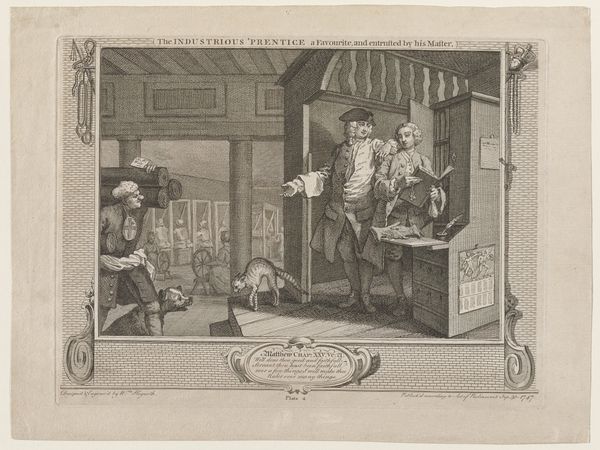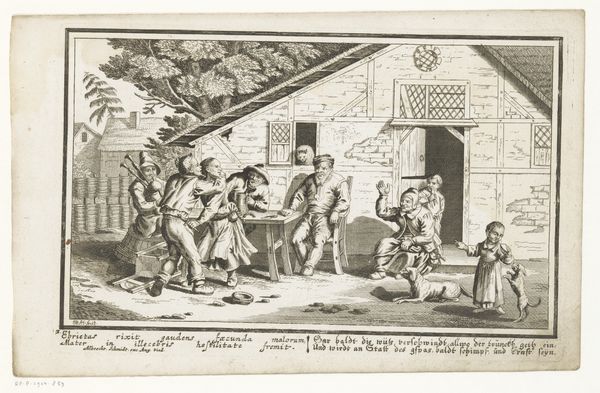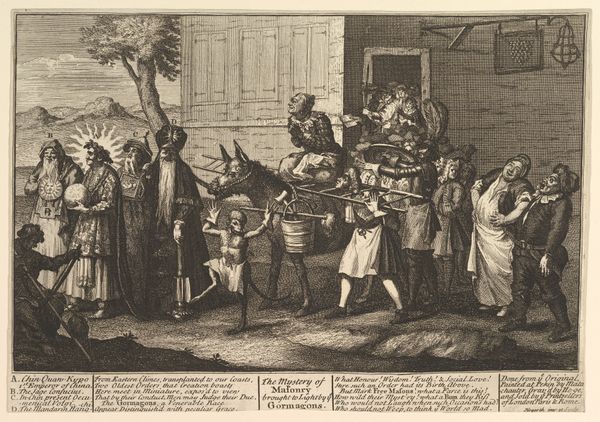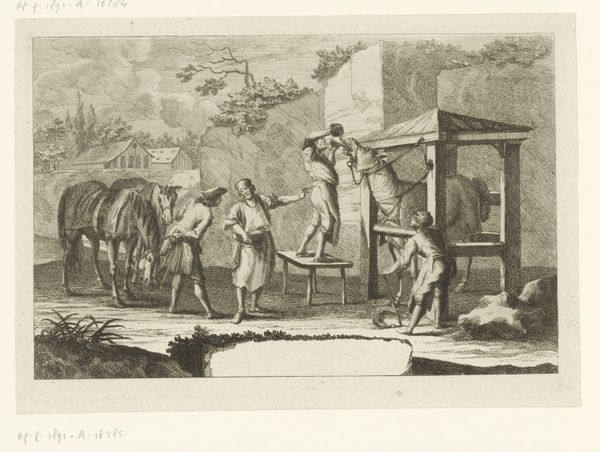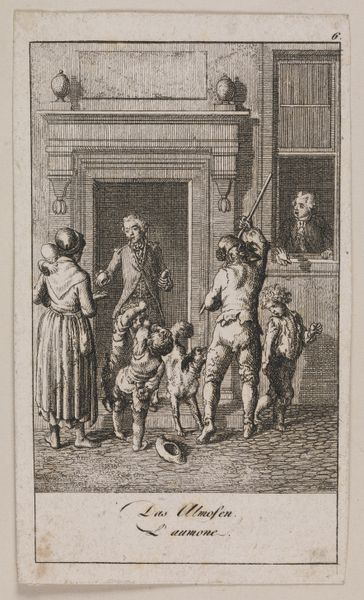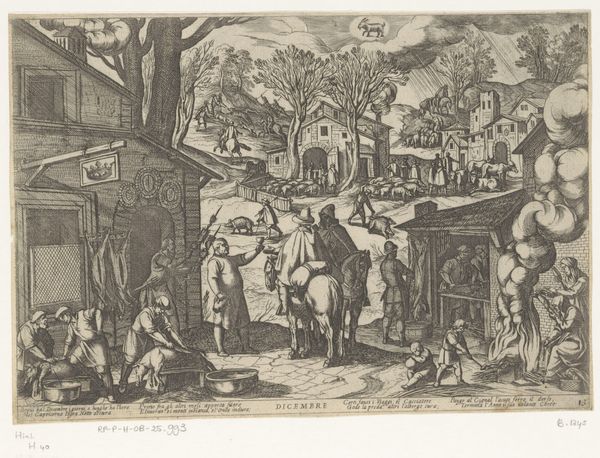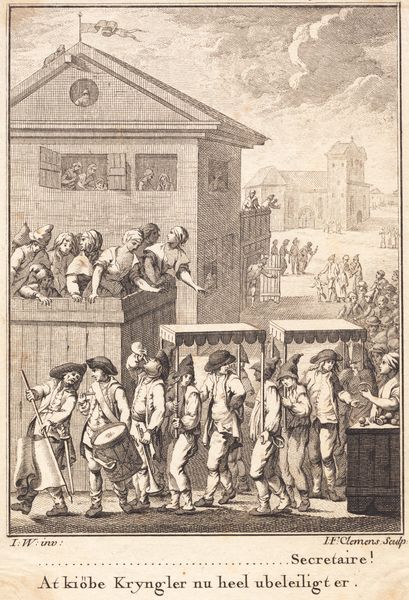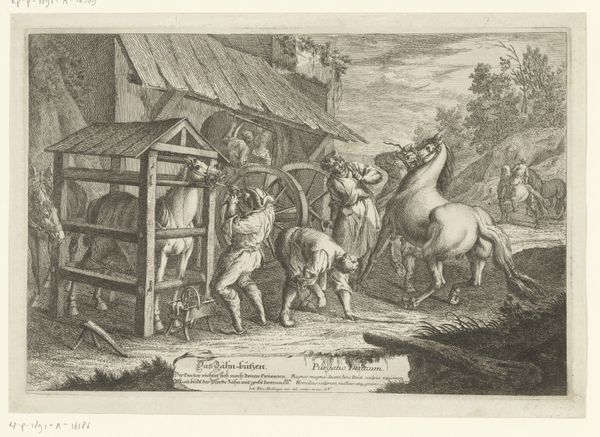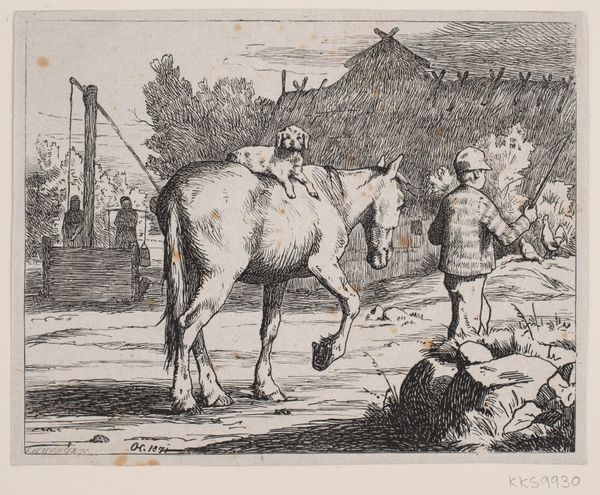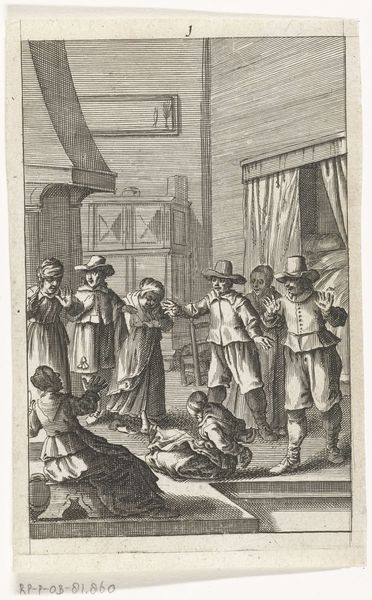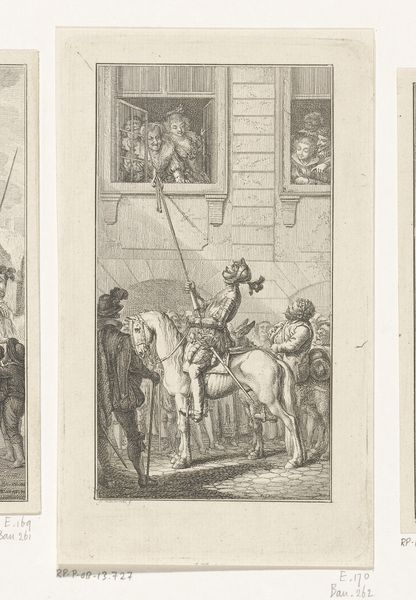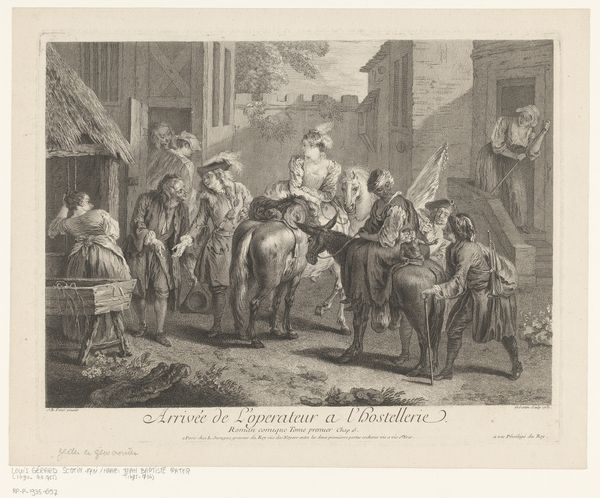
Hudibras Triumphant (Twelve Large Illustrations for Samuel Butler's Hudibras, Plate 4) 1725 - 1726
0:00
0:00
drawing, print, engraving
#
portrait
#
drawing
# print
#
caricature
#
figuration
#
horse
#
history-painting
#
engraving
Dimensions: sheet: 10 x 13 1/16 in. (25.4 x 33.2 cm) (trimmed within platemark)
Copyright: Public Domain
Curator: Ah, yes. "Hudibras Triumphant," Plate 4 from the series Twelve Large Illustrations for Samuel Butler's Hudibras by William Hogarth, etched sometime between 1725 and 1726. Look at this feast of detail! What catches your eye first? Editor: What strikes me first is the...controlled chaos. It's like a stage crowded with actors, each with their own mini-drama playing out, and yet the composition somehow manages not to collapse under its own weight. And there is definite humor! Curator: Hogarth always knew how to tell a story. The work, a print, shows the protagonist of Samuel Butler's satire "Hudibras" in a moment of perceived triumph, I believe. Though perhaps, like a carnival mirror, the triumph is skewed and ironic. Editor: I'm fascinated by that central figure on the horse. Is he supposed to represent idealized chivalry? Because, visually, his stature suggests something more pathetic than glorious, it’s hard to read as truly heroic. He almost seems to be bowing from horseback. Curator: Exactly! It's Hogarth skewering pretense. Think about the symbolism – the horse, usually an emblem of power and nobility, is rather...ordinary. The stocks nearby, the crowd with the rather severe dress—it all points to a society caught between traditions and new ideas. Editor: And the guy with the peg leg is he also being subjected to the “triumph?" He's got that defeated stance, almost like he’s surrendering to the victor and facing his humiliation. What story does *he* represent, do you think? Is he a vanquished foe, or another kind of social commentary? Curator: The beauty of Hogarth is that there's rarely one simple answer. He captures the contradictions of his era, making this more than just historical fiction; this really speaks to something bigger. Perhaps this engraving acts as a window, with him showing humanity, warts and all. He leaves enough unsaid for you to make it your own. Editor: That makes the experience feel alive. Art like this should leave us pondering. It’s also making me rethink the very idea of triumph. What *does* it mean, and who decides who’s in charge, anyway? It makes me question so many social norms. I guess the mark of really great work, or the iconographic work, in this case, is if it shakes you out of your expectations! Curator: Precisely. That's Hogarth for you, always prodding beneath the surface. He dares you to question everything!
Comments
No comments
Be the first to comment and join the conversation on the ultimate creative platform.


